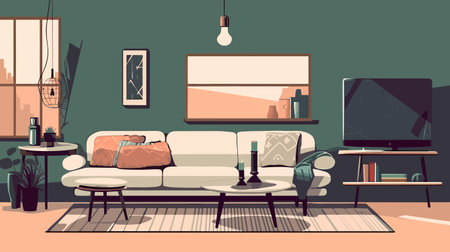Understanding Minimalism the British Way
Minimalism is often associated with sleek, modern interiors and pared-back lifestyles, but in the UK, it’s a philosophy that has evolved in its own unique way. While global minimalism tends to focus on stark simplicity and uniformity, British minimalism carries subtle nods to tradition, practicality, and a sense of understated comfort. The ethos here is less about emptying homes and more about thoughtful curation—choosing what truly matters while honouring both history and daily living.
The roots of British minimalism can be traced back to classic British design principles: an appreciation for craftsmanship, a respect for heritage pieces, and the clever use of space. Whether in a Victorian terrace or a countryside cottage, there’s a distinct balance between old and new—a blend that feels lived-in rather than staged. The British approach often means keeping a few sentimental items or heirlooms on display, creating interiors that are warm yet uncluttered.
Unlike some global trends that favour monochrome palettes and rigid lines, UK minimalism embraces texture, muted colours inspired by nature, and the gentle layering of materials. There’s also a strong culture of “make do and mend,” reflecting both environmental consciousness and a long-standing habit of repurposing rather than discarding. Ultimately, minimalism in Britain is less about strict rules and more about fostering calm, functional spaces that support daily life—whether you’re navigating the bustle of London or enjoying the peace of rural Wales.
Urban Minimalism: London Flat Living
Life in London is famously fast-paced, and with property prices soaring, many city dwellers find themselves in compact flats where every square inch counts. Embracing minimalism here isnt just a trend—its a practical necessity. Let’s explore how everyday Brits transform modest city spaces into calm, organised retreats with a distinctly British flavour.
Making the Most of Limited Space
Londoners have mastered the art of living well in small homes. Instead of seeing limited square footage as a setback, they use clever storage solutions and thoughtful layouts to create order and tranquillity amid urban chaos. Built-in wardrobes, under-bed drawers, and multifunctional furniture (think ottomans with hidden storage or wall-mounted desks) are staples in these homes.
Everyday Strategies for Urban Minimalism
| Minimalist Solution | How It Works | British Touch |
|---|---|---|
| Slimline Furniture | Saves space without sacrificing comfort; often modular for flexibility. | Classic Chesterfield sofas in compact sizes or fold-down dining tables. |
| Clever Storage | Utilises every nook—think built-ins, floating shelves, and alcove units. | Bespoke cabinetry crafted by local joiners. |
| Decluttering Rituals | Regularly paring down belongings to essentials only. | Charity shop donations and community ‘swap’ events. |
| Neutral Palettes | Makes rooms feel bigger, brighter, and calmer. | Soft greys and gentle greens inspired by British weather and countryside. |
The Calm Amidst the Capital’s Buzz
Despite the city’s constant movement, minimalist London flats offer a serene escape. By keeping only what’s meaningful, using smart design tricks, and adding subtle British details—like vintage teapots on open shelves or classic prints in modern frames—urban minimalists craft homes that are tidy yet inviting. It’s not just about less; it’s about making room for what matters most in true London style.

3. Rural Retreats: Embracing Simplicity in the Countryside
In the British countryside, minimalism unfolds with a distinctly local flavour, harmonising the nation’s deep-rooted traditions with the quest for clutter-free, serene spaces. Unlike their urban counterparts, rural dwellers often find themselves surrounded by history—quaint stone cottages, weathered beams, and the gentle patina of time. The challenge is to honour these beloved elements while stripping away excess. It’s less about stark white walls and more about editing possessions to showcase cherished heirlooms and handmade treasures.
Many rural homes incorporate local crafts into their minimalist ethos. Think of hand-thrown pottery from Cornwall, Welsh woollen blankets draped over a simple wooden bench, or a Shaker-style kitchen table crafted by a nearby joiner. These pieces ground interiors in their locale and tell stories of community and craftsmanship. Rather than filling shelves for the sake of display, every item has its place and purpose—a jug for wildflowers gathered from the hedgerow, a woven basket for freshly laid eggs.
Sustainability comes naturally to those living closer to the land. Embracing minimalism here means making do and mending—repairing rather than replacing, repurposing family furniture, or swapping seeds and tools with neighbours instead of buying new. A pared-back approach doesn’t strip away personality; instead, it puts values centre stage. The result is a home that feels warm, functional, and deeply connected to both its past and its present environment.
4. Decluttering with a British Accent
Minimalism in the UK isn’t just about empty spaces and monochrome palettes; it’s about making space for what matters, all while weaving in that charmingly practical British sensibility. Whether you live in a bustling London flat or a stone cottage nestled in the Cotswolds, decluttering the British way often starts with the heart of the home: the entrance. Many UK homes, especially rural ones, make brilliant use of boot rooms and mud-proof foyers. These spaces are not only functional but also act as the first line of defence against muddy wellies and unpredictable weather. Here’s how you can introduce minimalism into your daily routine with a distinctly British flavour:
Practical Tips for Tidying Up, UK Style
| Area | Urban Solution | Rural Solution |
|---|---|---|
| Boot Room / Foyer | Slimline shoe racks and wall-mounted coat hooks to maximise tight spaces; an umbrella stand for those inevitable rainy days. | Sturdy benches for pulling off muddy boots, deep baskets for hats and scarves, and washable mats to catch debris from countryside walks. |
| Living Area | Multi-purpose furniture like ottomans with hidden storage; shelving for books and knick-knacks curated to tell your story. | Wooden crates for logs by the fireplace, vintage trunks repurposed as coffee tables—practicality meets rustic charm. |
| Cupboards & Closets | Seasonal rotation of clothing, donating what no longer fits or suits your lifestyle; labelled storage boxes under beds. | Moth-proofing solutions for woollens, clear containers to keep track of out-of-season gear in lofts or sheds. |
The ‘Cuppa First’ Approach
No matter where you live in the UK, there’s an unspoken rule: before tackling any big tidying project, put the kettle on. The ‘cuppa first, sort it later’ mindset isn’t just tradition—it’s a gentle nudge to make decluttering less daunting and more social. Invite a friend round for tea and tackle that hallway closet together; swap stories as you sift through memories. This mindful approach encourages you to pause and reflect on what truly adds value to your home and life, keeping only those items that spark joy—or at least serve a very British purpose (like surviving another soggy afternoon).
5. Mixing Heritage with Minimalist Design
Minimalism in the UK is rarely about starting from scratch or stripping away every trace of the past. Instead, it often involves a careful balancing act between celebrating British heritage and embracing contemporary simplicity. Across both city flats and countryside cottages, Brits have become adept at preserving character while paring back excess. Rather than discarding old elements, many homeowners repurpose antiques—think a Victorian writing desk doubling as a pared-down workspace, or an ornate Georgian mirror set against crisp white walls. These touches nod to the country’s rich architectural legacy while supporting a clutter-free, considered environment.
This approach is less about erasure and more about editing. Original features such as exposed beams, sash windows, or decorative cornices are retained and even highlighted as focal points within otherwise restrained rooms. The British tendency to “make do and mend” finds new expression: an inherited oak chest might be sanded down for a lighter look, while antique crockery is displayed sparingly rather than hidden away. It’s about layering stories without overwhelming the senses, letting each piece breathe within its space.
Ultimately, this blend of old and new reflects a uniquely British sensibility—a respect for history paired with a practical eye for order. By mixing heritage with minimalist design, Brits manage to create homes that feel both timeless and refreshingly current, all while maintaining that unmistakable sense of place.
6. Mindful Minimalism: Everyday Habits & Wellbeing
Embracing Simple Pleasures, British Style
Mindful minimalism in the UK is more than decluttering; it’s about cultivating a lifestyle grounded in intention and everyday joy. Across both urban London terraces and rural Cotswold cottages, Britons have long appreciated the comfort of simple pleasures—be it a hot cuppa after a rainy walk or enjoying a well-thumbed book by the hearth. This distinctly British approach finds contentment not in excess, but in quiet rituals that bring warmth and calm to daily life.
Considered Purchases & Local Choices
A key tenet of sustainable minimalism is making thoughtful decisions when bringing new items into your home. In the UK, this often means favouring craftsmanship over convenience—choosing a sturdy Sheffield kettle or hand-thrown Cornish mug instead of mass-produced alternatives. Urban dwellers might frequent local markets for unique, long-lasting finds, while rural residents may cherish heirlooms passed down through generations. Each purchase is an act of mindfulness, supporting local makers and reducing unnecessary waste.
Routines for Calm and Clarity
The British twist on minimalism leans heavily into routines that foster wellbeing. Daily habits like tidying as you go, airing out rooms each morning (a nod to classic British housekeeping), or setting aside ‘quiet time’ for tea create pockets of peace within busy schedules. Even in the heart of bustling cities, these rituals help maintain a sense of order and serenity, proving that minimalism isn’t about having less—it’s about making space for what truly matters.
Ultimately, mindful minimalism in Britain is a gentle invitation to slow down and savour life’s little moments. By focusing on quality over quantity and weaving intentionality into daily routines, both urbanites and countryside dwellers can cultivate homes—and mindsets—that feel light, balanced, and unmistakably British.


